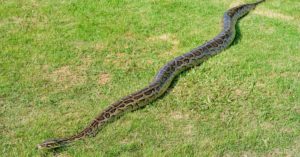Key West is the southern paradise of the continental United States. It boasts a world of wonders, from its picturesque landscapes and inviting beaches to its lively culture—however, many questions intrigue residents and visitors about the existence of crocodiles and alligators in Key West. Let’s delve into the presence of these formidable reptiles in the area, peeling back the layers of their existence and exploring their cohabitation with humans in the diverse ecosystems of Florida.
The American Crocodile in Key West
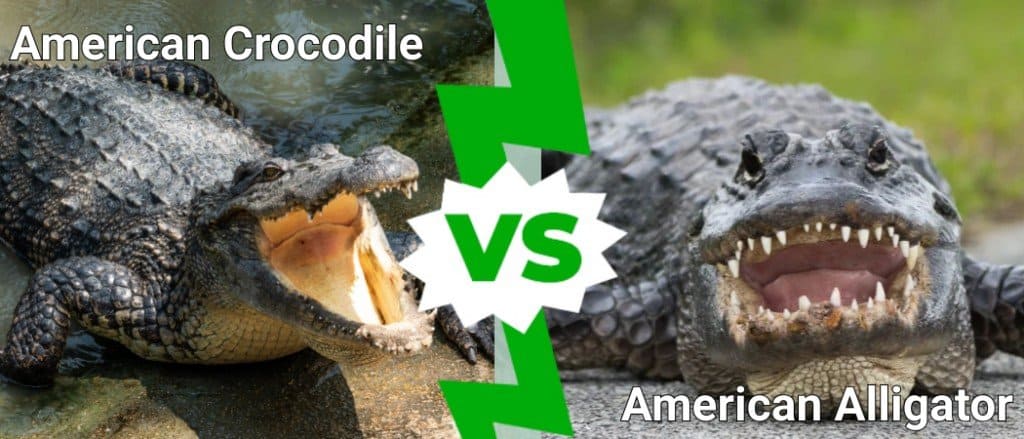
One of the most captivating aspects of Key West’s wildlife is the American crocodile (Crocodylus acutus). These awe-inspiring reptiles are readily distinguishable from their relatives, the American alligators, by their long, tapered snouts and preference for brackish and saltwater habitats. These factors make the coastal regions of the Florida Keys ideal for crocodiles. They thrive in this environment. The giant crocodiles grow 20 feet long and weigh over a ton.
Habitat and Behavior
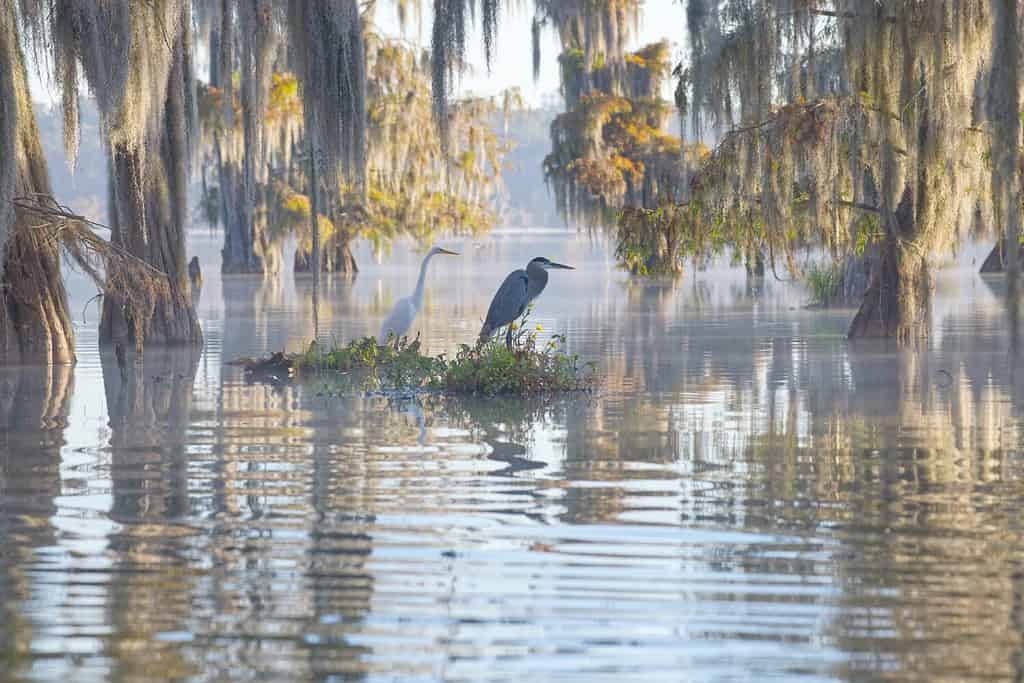
©Xiu Yu Photography/Shutterstock.com
The American crocodile’s preferred environments include coastal estuaries, lagoons, and mangrove swamps, all readily available in the Florida Keys. American crocodiles are typically solitary and reclusive, unlike their more sociable alligator cousins. They favor nocturnal activities, further diminishing their visibility to humans.
Conservation Status
Recognizing the significance of preserving this unique species, the American crocodile is classified as “threatened” under the U.S. Endangered Species Act. In response, conservation efforts have played a pivotal role in safeguarding their habitats, with particular attention to the Florida Keys. Residents and visitors in Key West are encouraged to adhere to conservation guidelines and maintain a safe distance strictly.
The American Alligator in Florida
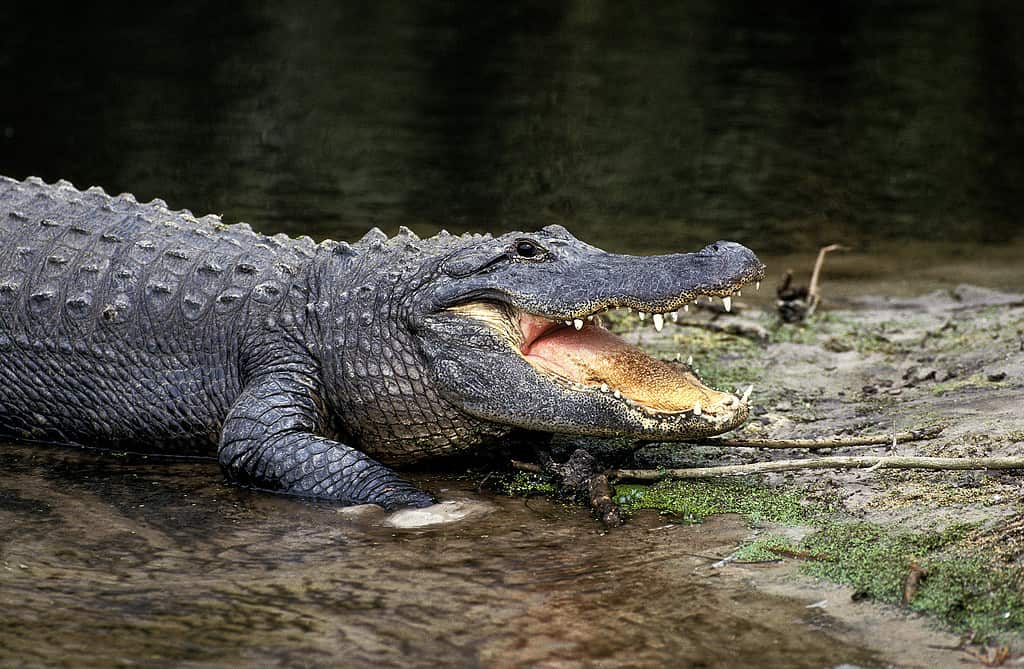
The American Alligator opens its mouth often to regulate body temperature.
©slowmotiongli/iStock via Getty Images
While Key West may house a small population of American crocodiles, the American alligator (Alligator mississippiensis) is Florida’s more widespread reptilian species. These reptiles can be found throughout the state, including select regions within the Florida Keys, but they are primarily associated with freshwater ecosystems.
Habitat and Behavior
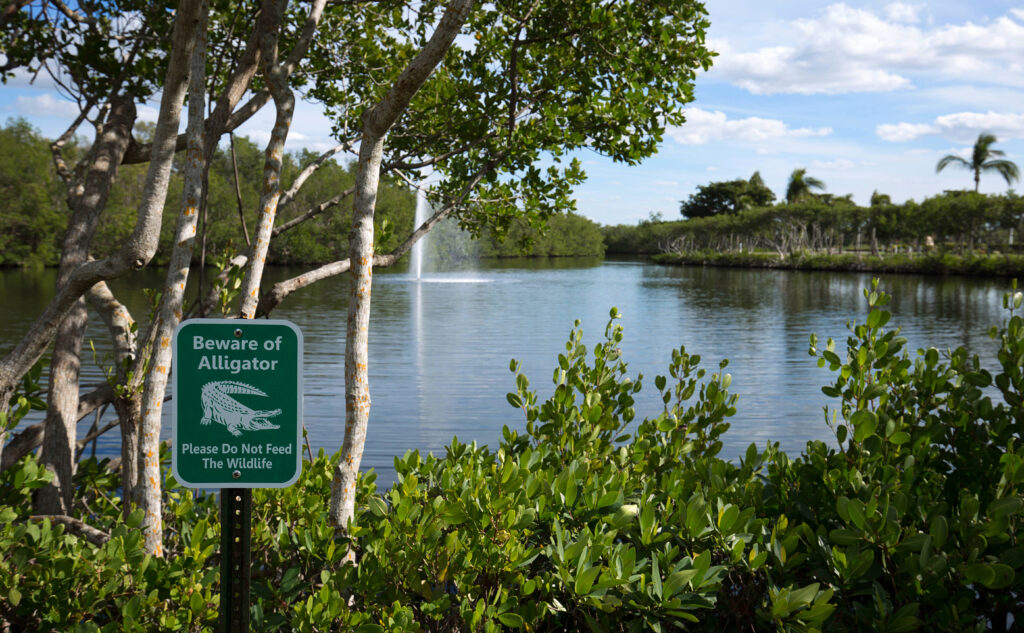
Florida is the unofficial home of alligators, and residents encounter these reptiles in golf courses, homes, and roads.
©Jillian Cain Photography/Shutterstock.com
American alligators thrive in freshwater environments such as swamps, marshes, lakes, rivers, and golf course ponds. Alligators are easily recognizable by their “U”-shaped snouts. Often they sunbathe near the water’s edge, with only their eyes and nostrils breaking the surface.
Conservation Status
The American alligator population has remarkably recovered since its endangered species listing in the 1960s. This conservation success story is truly impressive! Effective management and conservation practices ensure the harmonious coexistence of alligators and humans throughout the state.
Interactions and Safety

Floridians follow rules to help protect them from danger.
©Yordan Balabanov/Shutterstock.com
Enjoying crocodiles and alligators in Key West and Florida is about appreciating their uniqueness and prioritizing safety. It’s crucial only to observe these wild animals from a safe distance. Any attempt to feed or approach them can lead to dangerous situations for humans and reptiles.
Local authorities and wildlife agencies have instituted clear guidelines to promote the peaceful coexistence of humans and these remarkable creatures. These guidelines are usually adhered to by residents and visitors.
In the unique landscape of Key West and the broader Florida Keys, the presence of American crocodiles and alligators adds to the region’s rich biodiversity. While run-ins with these reptiles may be rare, they serve as a testament to the delicate balance between humanity and the natural world. By understanding and respecting wildlife and their natural habitats, we can continue to enjoy the splendor of Key West while safeguarding its unique ecosystems for generations to come.
The photo featured at the top of this post is © Chris Drahos/iStock via Getty Images
Thank you for reading! Have some feedback for us? Contact the AZ Animals editorial team.



